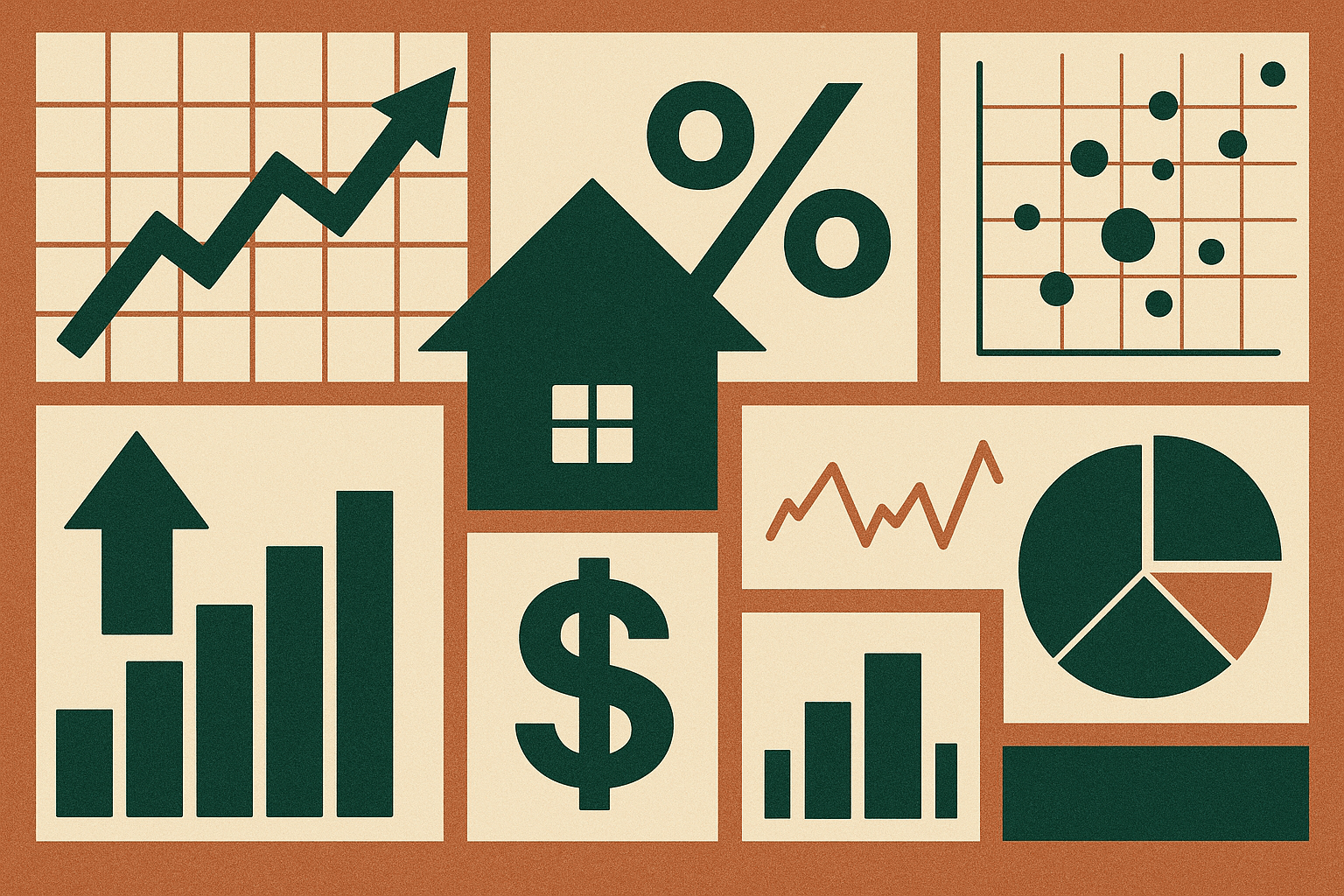Invest
South Australia's first-home buyer boom fuels a frenzy for lenders, builders and retailers
Invest
South Australia's first-home buyer boom fuels a frenzy for lenders, builders and retailers
South Australia has quietly become the nation’s most active first‑home buyer market, fuelled by falling rates, generous state incentives and a responsive broker ecosystem.
South Australia's first-home buyer boom fuels a frenzy for lenders, builders and retailers
South Australia has quietly become the nation’s most active first‑home buyer market, fuelled by falling rates, generous state incentives and a responsive broker ecosystem.

Behind the headlines is a coordinated demand flywheel that’s reshaping lending pipelines, residential construction schedules and retail demand across Adelaide and key growth corridors. This case study decodes the mechanics, quantifies the upside, and offers an execution roadmap for executives deciding where to allocate capital in 2025–26. The conclusion: early movers can bank durable share gains—if they navigate capacity, credit and geographic concentration risks.
Case Study: South Australia’s first‑home buyer market
Context: A perfect alignment of policy, price and rates
South Australia has emerged as the standout first‑home buyer (FHB) market in Australia. Multiple data sets converge on the same signal: FHB momentum is strongest in SA and intensifying. In December 2024, FHB loans accounted for a record 34.9% of all owner‑occupier loans in the state. Through mid‑2025, the pipeline stayed hot—mortgage broker enquiries from FHBs rose about 10% in the June quarter, with Equifax reporting a 9% lift in FHB mortgage applications nationally over the same period, with SA contributing outsized growth.
What changed? Three forces aligned. First, interest rates have eased from their peak, boosting borrowing capacity and sentiment. Second, SA’s targeted incentives—widely cited by industry economists as unusually generous—cut upfront costs, with the removal of stamp duty for eligible FHBs and the scrapping of property value caps on the First Home Owner Grant substantially lowering deposit hurdles. Third, price relativity: Adelaide remains more attainable than Sydney or Melbourne despite recent gains, widening the feasible buyer pool.

Industry perspectives echo the data. Analysts at PropTrack and building industry economists (HIA, Master Builders SA) have pointed to SA’s incentive mix as a key demand driver, while Adelaide brokers report unusually high preparedness among FHBs: pre‑approvals in hand, budgets set, and realistic suburb trade‑offs. Real estate agents (Ray White SA, REISA) describe competitive but rational bidding in entry‑level segments. Meanwhile, CBRE’s valuation commentary suggests price stability in oversupplied pockets (such as Angle Vale and Mount Barker), offering targeted opportunities.
Decision: How policy and industry leaders chose to amplify demand
The pivotal decision was policy design: SA’s government opted to prioritise FHB accessibility by removing major friction points (duty, caps), effectively turning on a well‑calibrated demand tap. Market actors responded strategically:
- Lenders: Tilted product features to FHBs—sharper introductory rates, cashback repricing, LMI discounts, and streamlined pre‑approval processes via brokers.
- Developers/builders: Re‑sequenced land releases and productised “turnkey under X price” offerings tailored to grant thresholds in northern and southern growth corridors.
- Brokers: Shifted prospecting to education‑led funnels (webinars, suburb reports, borrowing power calculators) to convert intent into approvals faster.
- Retailers/trades: Forward‑ordered core fit‑out categories (appliances, flooring, paint) and secured trade capacity to meet settlement‑driven demand spikes.
Implementation: The flywheel in motion
Once incentives reduced cash barriers, brokers became the operational centre. Adelaide‑based brokers report faster pre‑approval cycles and higher conversion as lenders simplified credit workflows for FHB cohorts. Developers leaned into stage launches that align with finance timelines, while construction schedules were balanced against labour and materials availability—critical after the 2022–23 cost shock. Proptech tools (valuation APIs, digital ID, open banking affordability models) compressed time‑to‑approval, a decisive advantage when entry‑level listings move within days.
The state’s geographic pattern matters. While inner‑ring stock remains tight, oversupply pockets in Angle Vale and Mount Barker (identified by market analysts in late 2024) created pricing headroom and less bidder congestion. Savvy buyers—and the brokers guiding them—redirected search activity to these micro‑markets, smoothing price pressure and preventing blow‑outs at the budget end.
Results: What the numbers say
- Market share: FHBs represented 34.9% of owner‑occupier loans in SA in Dec 2024 (record high), materially above long‑run averages.
- Pipeline growth: Equifax recorded a 9% rise in FHB mortgage applications in the June 2025 quarter; SA brokers report ~10% growth in FHB enquiries over the same period.
- Forward momentum: Money.com.au’s First Home Buyer Mortgage Insights (Apr 2025) flagged a continuing uplift, including a projected ~6.5% increase in FHB loan volumes for 2025, with SA among key contributors.
- Relative outperformance: SA’s FHB momentum outpaced states like NSW and WA through mid‑2025, where activity was more volatile.
While precise settlement volumes will lag applications, the direction is unambiguous: SA’s FHB engine is running hotter and earlier than elsewhere.
Technical deep dive: Why rates and incentives move the dial
Two mechanics explain the outsized response. First, borrowing capacity is convex to rate changes under APRA’s serviceability buffer. A 50‑basis‑point cut can lift maximum borrowing capacity by roughly 5–8% for many borrowers, depending on income and liabilities—often the difference between missing and making an entry‑level purchase. Second, upfront cost reduction compounds this effect. Removing stamp duty and value caps on grants can shave tens of thousands of dollars off cash‑on‑hand needs, materially reducing time‑to‑deposit and enabling more borrowers to pass lender credit tests earlier.
Layer in a broker‑led distribution model—where 70%+ of mortgages nationally flow via brokers—and policy’s impact is amplified by rapid customer education and channel execution.
Business impact: Who wins and how
- Lenders: FHBs are high‑LTV, lower balance, but sticky relationship customers. Early pricing and risk‑based underwriting (e.g., targeted LMI waivers, parental‑guarantor variants) can capture lifetime value across cards, deposits and future refinances.
- Builders/developers: Product‑market fit in the $450k–$700k band dominates. Fixed‑price contracts with transparent escalation clauses de‑risk margin. Targeted releases in oversupply pockets can accelerate absorption without discounting.
- Retail/homewares: Settlement‑triggered demand waves for big‑ticket items are predictable. Align inventory and promotions with builder handover calendars; use addressable marketing via broker partnerships.
- Proptechs: Affordability engines, open‑banking‑powered income verification and automated valuations are now decisive speed advantages in FHB conversion.
Risks and implementation reality
- Rate path uncertainty: A slower or paused easing cycle would temper capacity gains. Scenario plan for flat rates and stress test conversion assumptions.
- Build‑time risk: Labour bottlenecks remain uneven. Pre‑book trades, hedge key materials, and avoid over‑promising completion windows.
- Credit quality: High‑LTV cohorts are sensitive to income shocks. Apply granular affordability models and active early‑warning systems post‑settlement.
- Geographic concentration: Over‑reliance on a handful of growth corridors raises exposure to localised price corrections; diversify site pipelines.
Lessons: A scalable playbook
This case shows how targeted incentives, rate tailwinds and a broker‑centric channel create a self‑reinforcing demand flywheel. The strategic takeaways:
- Meet policy with product: Configure lending and housing products to mirror incentive thresholds; speed and fit beat headline rate in FHB decisions.
- Engineer speed: Invest in digital credit assessment, broker enablement and pre‑approval automation to compress cycle times.
- Exploit micro‑markets: Use suburb‑level supply data to steer buyers to pockets (e.g., Angle Vale, Mount Barker) where competition is lower and deals close faster.
- Own the relationship: Build post‑settlement nurture to reduce refinance churn at 18–24 months; FHBs are high‑propensity cross‑sell customers.
- Balance capacity and risk: Cap sales pace to build capacity; price for volatility, not perfection.
Outlook: What to watch in 2025–26
Expect SA to remain an FHB leader if rate cuts proceed and incentives persist. Other states are already studying SA’s framework, raising the prospect of competitive policy responses. For executives, the window for first‑mover advantage is open now: allocate capital to SA FHB propositions, lock in broker partnerships, seed inventory in oversupply micro‑markets, and prepare for a second‑order lift in home‑adjacent retail. If policy diffusion occurs interstate, the SA playbook becomes the national template.

Property
Hidden cost, higher prices: Why a council fee fight matters for Australia’s housing pipeline
A dispute between the Housing Industry Association and Goulburn Mulwaree Council over development cost estimates is more than a local skirmish—it spotlights a systemic pricing lever that can compound ...Read more

Property
Why Aussie homes are turning into stepping stones for the new generation
A new cohort of buyers is treating their first property as a launchpad, not a destination—and the mortgage industry is pivoting in lockstep. Read more

Property
Rate cuts ignite an upsizing wave: how to win the next phase of Australia’s housing cycle
Cheaper money is reviving borrowing capacity and confidence, and upsizers are back in force — most visibly at auctions where clearance rates have lifted to yearly highs. The ripple effects extend ...Read more

Property
Rate anxiety fades, affordability bites: What Australia’s property market shift means for business
Australian buyers are no longer driven primarily by interest rate fears; the binding constraint is affordability. New research shows price pressure, not policy moves, is shaping behaviour—forcing ...Read more

Property
Melbourne’s turning point: the 2025 playbook for investors—and the 2026 upside
After lagging other capitals, Melbourne is quietly moving off the floor. Prices have logged several consecutive months of growth, rental markets remain tight, and forecasts point to a sharper upswing ...Read more

Property
Brisbane hits the million-dollar mark as growth takes a detour and investors eye new opportunities
Brisbane has crossed the symbolic $1 million median for houses, but the more investable momentum is in units—and the growth curve is flattening. Read more

Property
North platform adds household reporting feature to boost adviser efficiency
AMP's North platform has launched consolidated household reporting across multiple client accounts, helping financial advisers streamline their client review processes. Read more

Property
What Adds The Most Value To Properties?
Wondering how to up the value of your property? Properties are worth a lot of money in general, but there’s always a way to maximise value. The good news is that most of the things you can do to ...Read more

Property
Hidden cost, higher prices: Why a council fee fight matters for Australia’s housing pipeline
A dispute between the Housing Industry Association and Goulburn Mulwaree Council over development cost estimates is more than a local skirmish—it spotlights a systemic pricing lever that can compound ...Read more

Property
Why Aussie homes are turning into stepping stones for the new generation
A new cohort of buyers is treating their first property as a launchpad, not a destination—and the mortgage industry is pivoting in lockstep. Read more

Property
Rate cuts ignite an upsizing wave: how to win the next phase of Australia’s housing cycle
Cheaper money is reviving borrowing capacity and confidence, and upsizers are back in force — most visibly at auctions where clearance rates have lifted to yearly highs. The ripple effects extend ...Read more

Property
Rate anxiety fades, affordability bites: What Australia’s property market shift means for business
Australian buyers are no longer driven primarily by interest rate fears; the binding constraint is affordability. New research shows price pressure, not policy moves, is shaping behaviour—forcing ...Read more

Property
Melbourne’s turning point: the 2025 playbook for investors—and the 2026 upside
After lagging other capitals, Melbourne is quietly moving off the floor. Prices have logged several consecutive months of growth, rental markets remain tight, and forecasts point to a sharper upswing ...Read more

Property
Brisbane hits the million-dollar mark as growth takes a detour and investors eye new opportunities
Brisbane has crossed the symbolic $1 million median for houses, but the more investable momentum is in units—and the growth curve is flattening. Read more

Property
North platform adds household reporting feature to boost adviser efficiency
AMP's North platform has launched consolidated household reporting across multiple client accounts, helping financial advisers streamline their client review processes. Read more

Property
What Adds The Most Value To Properties?
Wondering how to up the value of your property? Properties are worth a lot of money in general, but there’s always a way to maximise value. The good news is that most of the things you can do to ...Read more








